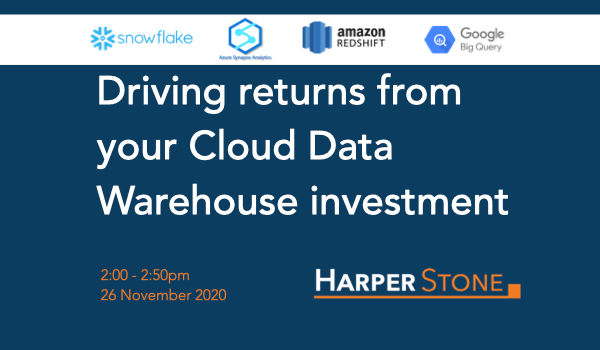Are you a data catalyst?
- Jamie Harper

- Oct 5, 2021
- 3 min read

Over the past few years, there have been huge sums invested in data and analytics projects by organisations, the investment has only been outpaced by the hype. Yet, despite the significant investment, the returns have been lacklustre and disappointing. The reason behind this may also indicate why things are on the cusp of change.
In speaking with many CIO’s across both large and medium sized businesses, there is one consistent issue they raise with me, as one of their largest challenges. This issue is data quality and the overarching issue of data governance. And this leads us back to the underwhelming returns from many data and analytics projects up to this point.
What we have seen when reviewing a number of projects, is that while they set out to deliver a predictive capability to the organisation, once the project was started they were faced with significant data management challenges. These challenges forced their internal teams to spend large portions of the project timeline and budget on the backend and hidden tasks of implementing a data pipeline. Tasks like data source identification, data acquisition and data cleansing, the “unsexy” side of analytics. Often this led to a very small amount of time remaining to actually analyse the data and to be able to produce the actionable insights that the organisation was investing in at the outset.
While these investments have delivered an incredibly frustrating and disappointing outcome, for many organisations they have successfully implemented the foundation. Now, with smart leadership, they are positioned to start delivering on that investment. This sentiment is reflected in a recent article by EY Global, which highlighted the changing role of the CFO in order for their organisations to realise the potential of data and analytics.
"Data science moves us from the accounting role of reporting the past to the finance role of guiding the future." Kelly Wong, CFO, KIDO Group
The EY article recognised that we are at the turning point for data and analytics, as it steps outside of the IT function and into the hands of the business. They outlined six key areas of focus to finally take advantage of data and analytics:
Making the case for data as integral to the business strategy by identifying proof of concept projects
Aligning the analytics capability and delivery with priority business requirements
Helping instil the right leadership and culture
Providing the training to help individuals recognise decision biases – the psychological assumptions that often lead to poor decision-making
Providing easy-to-use tools for users of data
Transforming the analytics-based insights into actions, and aligning incentives, rewards and measurement accordingly
From our experience, we would agree with their 6 key points, but add the need to also invest in data literacy, initially with a focus on the executive and then expanding this across the entire organisation. Data literacy must become part of a structured learning and development program that starts from the basics and develops data confidence in all staff across an organisation.
While it is frustrating to invest in projects that don’t immediately deliver a financial return, what many of these data projects have delivered is a high quality foundation, through the use of modern Cloud Data Warehouses like Snowflake, Redshift, Synapse and BigQuery. They have created high quality data pipelines and data governance. The environment is now primed for you to act in a key role, as the data catalyst, moving data and analytics from an IT infrastructure domain into the core business operation.






Comments